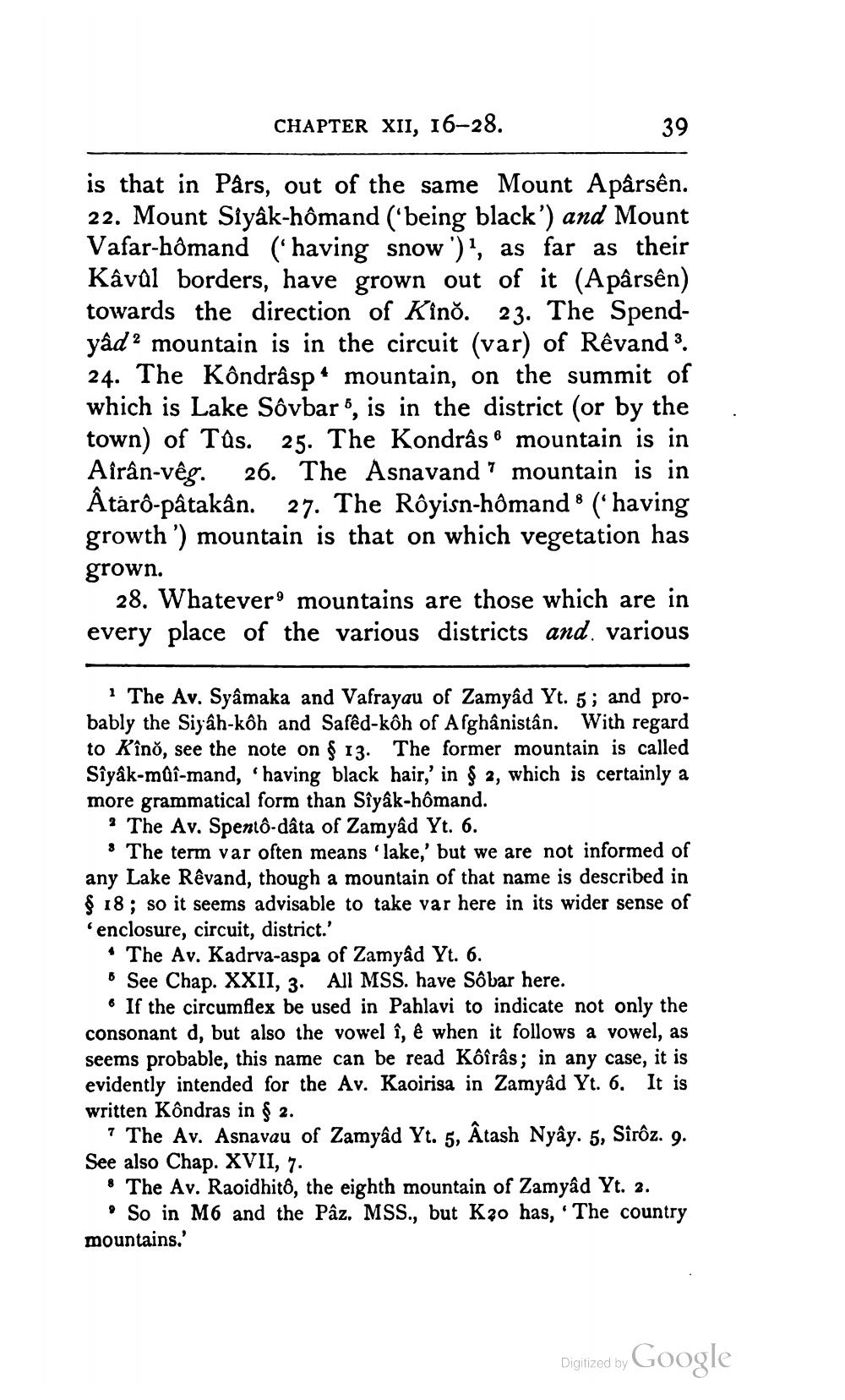________________
CHAPTER XII, 16–28.
39
is that in Pars, out of the same Mount Apârsên. 22. Mount Siyâk-hômand ('being black') and Mount Vafar-hômand having snow')?, as far as their Kâval borders, have grown out of it (A pârsên) towards the direction of Kino. 23. The Spendyâd? mountain is in the circuit (var) of Rêvand 3. 24. The Kôndrâspo mountain, on the summit of which is Lake Sôvbar 5, is in the district (or by the town) of Tûs. 25. The Kondrâse mountain is in Afrân-vêg. 26. The Asnavand' mountain is in Åtárô-pâtakân. 27. The Rôyisn-hômand (having growth ') mountain is that on which vegetation has grown.
28. Whatevero mountains are those which are in every place of the various districts and various
1 The Av. Syâmaka and Vafrayau of Zamyâd Yt. 5; and probably the Siyah-kôh and Safed-kôh of Afghanistan. With regard to Kino, see the note on § 13. The former mountain is called Sîyâk-mûî-mand, having black hair,' in § 2, which is certainly a more grammatical form than Sîyâk-hômand.
· The Av. Spentô-dâta of Zamyâd Yt. 6.
: The term var often means 'lake,' but we are not informed of any Lake Rêvand, though a mountain of that name is described in § 18; so it seems advisable to take var here in its wider sense of 'enclosure, circuit, district.'
• The Av. Kadrva-aspa of Zamyâd Yt. 6. o See Chap. XXII, 3. All MSS. have Sôbar here.
6 If the circumflex be used in Pahlavi to indicate not only the consonant d, but also the vowel î, e when it follows a vowel, as seems probable, this name can be read Kôîrâs; in any case, it is evidently intended for the Av. Kaoirisa in Zamyâd Yt. 6. It is written Kôndras in $ 2.
? The Av. Asnavau of Zamyâd Yt. 5, Âtash Nyây. 5, Sîrôz. 9. See also Chap. XVII, 7.
• The Av. Raoidhitô, the eighth mountain of Zamyâd Yt. 2.
. So in M6 and the Pâz. MSS., but K20 has, .The country mountains.
Digitized by
Digitized by Google




